#ira tries photography
Text




Pink
#aesthetic#ira's diary#ira tries photography#photography#college diaries#lensblr#clouds#pink skies#moodboards
12 notes
·
View notes
Text

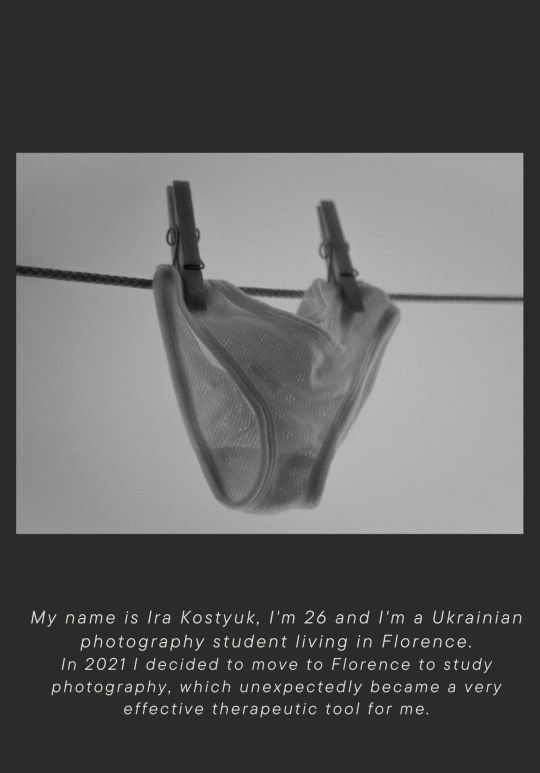

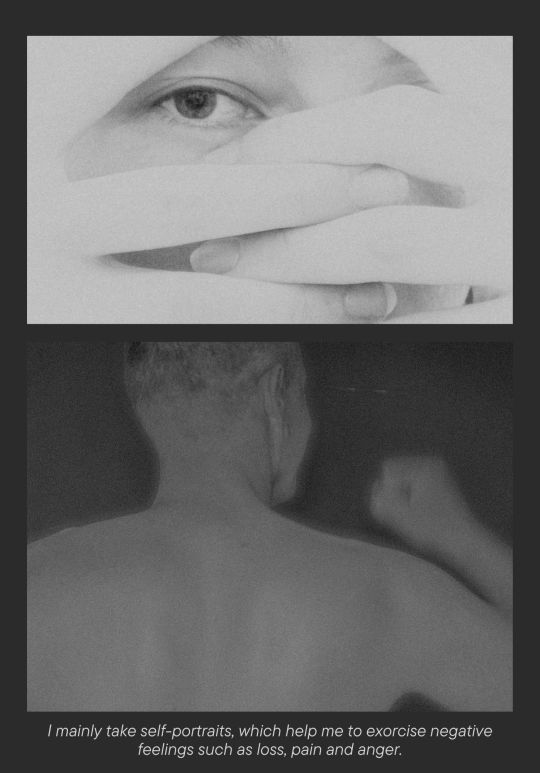
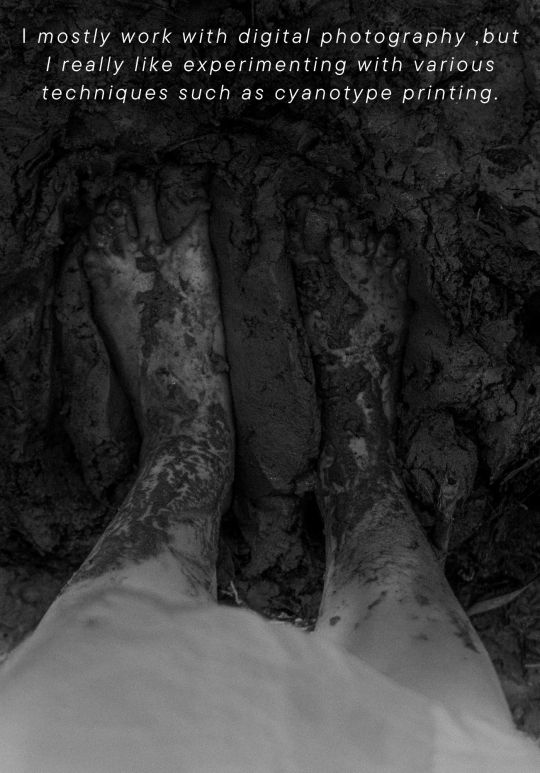
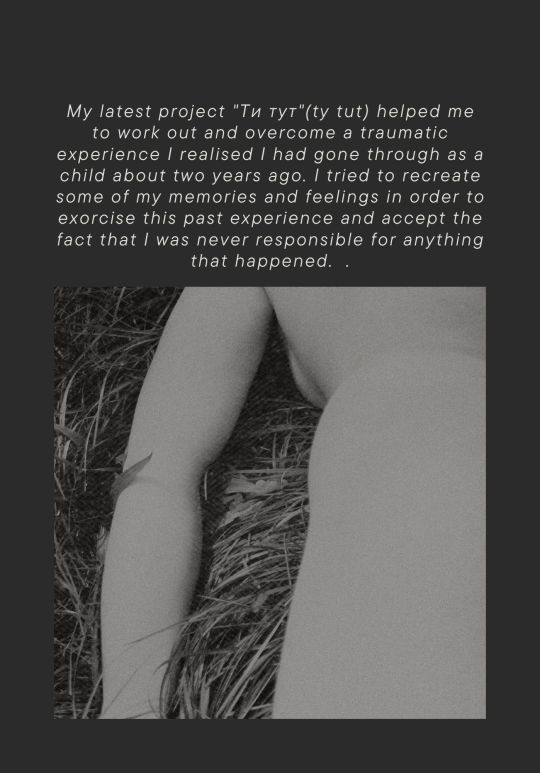
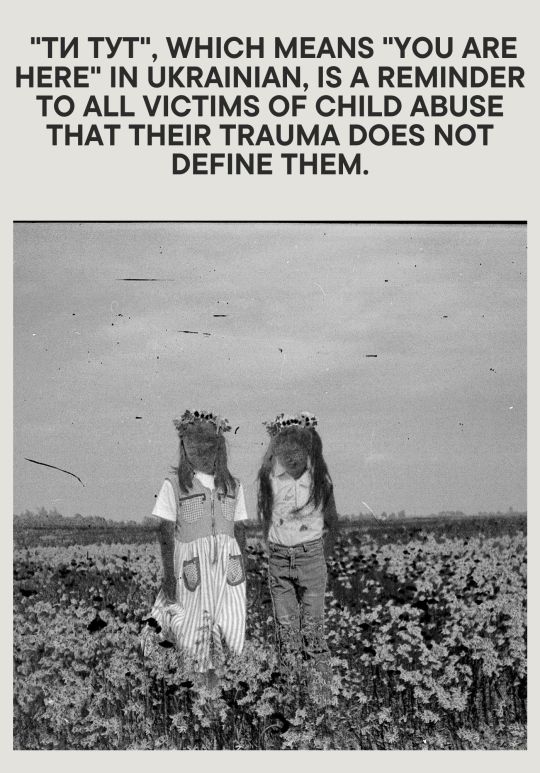



My name is Ira Kostyuk, I'm 26 and I'm a Ukrainian photography student living in Florence.
In 2021 I decided to move to Florence to study photography, which unexpectedly became a very effective therapeutic tool for me.
I mainly take self-portraits, which help me to exorcise negative feelings such as loss, pain and anger.
My latest project "Ти тут"(ty tut) helped me to work out and overcome a traumatic experience I realised I had gone through as a child about two years ago. I tried to recreate some of my memories and feelings in order to exorcise this past experience and accept the fact that I was never responsible for anything that happened. "Ти тут", which means "You are here" in Ukrainian, is a reminder to all victims of child abuse that their trauma does not define them.
8 notes
·
View notes
Text
Cheese Bakery cafe designed by Ira Lysiuk is located in the heart of Lviv city in a historic building of the 19th century. The brick walls of the room are riddled with history. Photography by Andriy Shustykevych.
#gallery-0-6 { margin: auto; } #gallery-0-6 .gallery-item { float: left; margin-top: 10px; text-align: center; width: 25%; } #gallery-0-6 img { border: 2px solid #cfcfcf; } #gallery-0-6 .gallery-caption { margin-left: 0; } /* see gallery_shortcode() in wp-includes/media.php */
.
“We decided to preserve their original appearance as well as marble floors and windoor, a beautiful vaulted ceiling, and antique cast iron heating radiators. Despite the fact that the building is historical, the cafe is modern. This place is for people who adore delicious cuisine and a cozy atmosphere. We tried to avoid the feeling of a place of public catering. Therefore, in this interior, there are no identical chairs
in a row. On the contrary, all the furniture, dishes, and lamps are different. All details work for a common goal which is to make a visitor feel as if he has come to visit his friends. That is why a soft deep sofa for a large company holds a central place. Imperfection is attracting. Concrete and marble tiles created at the Leoti Lviv manufactory, handmade clay lamps from Yaglyna, wooden inlaid table GC Wood, paintings made by Kyiv artist Artem Prut, and a lot of Ukrainian subject design found its place in the interior: the FILD, Nordwood, OdudLab, MonBon, MODI, ProPro furniture… The Cheese Bakery cafe project is the result of the work of so many young and creative people.”
Design: Ira Lysiuk
Visualization: Natalia Bohuta
Drawing: Roman Kaplun
Foto: Andriy Shustykevych
Category: restaurant design
Project area: 145 м2
Realization year: 2019
Location: Ukraine, Lviv
Cheese Bakery cafe by Ira Lysiuk Cheese Bakery cafe designed by Ira Lysiuk is located in the heart of Lviv city in a historic building of the 19th century.
2 notes
·
View notes
Text
06/25
I was listening to a podcast with center-right political commentator David Brooks the other day. Thankfully, it didn’t touch on his bad policy opinions, instead focusing on the ideas of living a moral and fulfilling life, which I think everyone can get behind. He was talking about how there were two “mountains” regarding goals that people chased. The first mountain is meant to be the most classic things that most people focus their lives on. This includes things like their career, money, etc. The second mountain represents all of the things that tend to bring greater fulfillment that the first mountain cannot provide. That includes things like relationships, but the greater theme around the second mountain is focusing on someone or something outside of yourself.
From what I remember about the podcast, most people focus on the first mountain for some portion of their lives and then enter a valley where they start to question everything, especially their motivations and values in life as they try to find greater value in life. I’m always torn when I think about things like this because I know that I have a tendency to approach life like I’m an old man who is finished with his life, instead of a spry youth who likely has a bunch of time ahead of him to do a lot of interesting things. What I mean is that I often wonder if I should dedicate some of my time to being able to experience the “unfulfilling” bits of life so I have a better perspective going forward. In other words, I wonder if I should allow myself to make the mistakes that most young people probably will and learn from. Will I regret it if I don’t give myself time to act like an idiot for some time and be impulsive? Who knows?
The second mountain that Brooks describes is focused on commitment. Specifically, there are four types of commitments that he believes are related to the most fulfilling lives: to a spouse and family, to a philosophy or faith, to a community, and to a vocation. All of these represent life paths that aren’t new at all, having existed for many generations. Yet, they seem so much more difficult to achieve than ever before. With a greater individualistic bent to the world, it feels like starting a family is something reserved for your 30s at the earliest. The world seems much less religious, and even though I believe strongly in God, I know that I don’t commit myself to piety as much as I could. As for community, that’s something that I’ve been searching for my whole life, and I will continue to search for. The last of the four is a vocation, which Brooks explains as a calling. I’ve grappled with the idea of a calling for a long time.
And I’ve been writing about it for a really long time. (Don’t read any of that, I used to write with way better vocabulary and way more pretentiousness). I’ve tried to do a lot of different creative projects to try and awaken my calling and none of them really truly felt THAT good. Sure photography was fun and illustrating was cool, but I always felt like there was a huge gap between where I was and where I needed to be just to enjoy anything that I put out. There’s the classic Ira Glass speech about creativity where Glass reminds us that becoming creatively talented means a lot of work to reach the level that you live up to your own taste. Although I agree with the sentiment, I know that you can have taste for something without needing to creatively reach that level. That’s why I listen to lots of great music and eat lots of great food.
There is one activity that I’ve consistently returned to over and over again. Even though I’ve struggled to find the right medium or message or style, I’ve always been drawn to writing. Sometimes it feels like there’s a part of me that NEEDS to write. That if I don’t write, then some essential part of my being will begin to wither away until it’s completely gone and I’ll live my life as an incomplete being. Yes, I’m being dramatic. No, I won’t recant that view. So where I’m at right now, I think that writing could be my vocation, a calling in need of commitment that will drive me to find greater fulfillment.
There are multiple elements to my enjoyment of writing. First of all, the act of writing is immensely cathartic, a way for my too-full head to relieve some pressure. I get to organize and figure out my thoughts in a way that makes sense and other people can understand. This leads to the second reason why I love writing. Connection. To me, art’s most powerful attribute is its ability to connect people emotionally, in spite of things like distance. Writing often allows me to share my own experiences and give others an understanding of my life. Beyond that, what I say about identity has the ability to give form to ideas that other people have thought and experienced, which can be a really validating experience. Lastly, I love reading. I’ve felt that validation from great works of writing that I’ve read, but books and essays have even greater power.
Great writing has always been something that can change my entire perspective on the world or just on a day or a moment. Strings of words have always held my heart, capable of changing everything instantaneously. And I want to have that power, to connect with others, to change minds, to evoke emotion. I think about one day being able to inspire some other kid to write or just to express themself in some way as my favorite writers did for me.
Sure, I’ll continue to be a designer by trade, but I don’t think that’s all I want to be. I think that writing is something that I need to pour myself into, just to stay alive and sane. I think that every day I want to write some stuff, whether it’s a 1000 words, or just 100.
1 note
·
View note
Text
4.Perspective - Stuart Griffiths

In many ways photography is about perspective. It’s about how we see the world and as a photographer that is reflected through our photographs. I tried to do a bit of research into soldiers serving in Northern Ireland during the conflict. I came across the work of Stuart Griffiths. At first I thought he was just a guy that took a few photographs during the Troubles, but as I started looking into his work in more detail I quickly realized that he had been a serving soldier in Belfast throughout the 1990s and his photography work was in response to the sheer boredom that he faced. Firstly, I think it’s important to look into the context of the time in which Stuarts’ photographs were taken. As the Northern Ireland conflict was beginning to come to an end, there was actually a surge in violence with the IRA increasingly bombing the mainland and Loyalist paramilitaries retaliating by murdering innocent Catholics.
“1993 was one of the darkest years of the Troubles, with IRA explosions on both sides of the Irish Sea and a series of Loyalist assassinations.” – Dr Eamon Phoenix
The Sean Graham bookmakers massacre, Shankill Bomb, Greysteel and Loughinisland were just some of the atrocities that were the backdrop to 1990s Northern Ireland. While all of this chaos was going on, Griffiths was based in various army barracks during NI tours. Once patrolling and operational duties were finished, the soldiers would come back to the barracks and spend hours just sitting about doing nothing.
“My early photos were mostly about boredom, photographing for the sake of photographing. I had the idea that these images would be a starting point to paintings or drawings.” – Stuart Griffiths – Para Turned Photographer
“Hopefully they capture how mundane a lot of military life was. It's a fairly subversive viewpoint of the British army in Northern Ireland. How dull and depressing it was at times.” - Stuart Griffiths - VICE
Much of his work from Northern Ireland was snapshot photography. It wasn’t practical to carry around professional camera equipment so he used a disposable camera, however I personally feel this gives his work a unique perspective. We see what he saw. This isn’t work from a press photographer photographing a soldier. This is a soldier photographing a soldiers’ life. It’s from their perspective. It what they saw and what they got up to. This makes the images raw and gives the viewer a realistic glimpse into what life was like for a soldier on duty. It may also help change the viewpoint as to how soldiers were perceived here. This is open for debate.
Pigs Disco
This is the name of Stuart’s book published in 2013. The name of the book refers to the disco the soldiers had at Palace Barracks every Sunday Night. I recently purchased the book and ever since I got it, I’ve found it really fascinating. Within the book there’s various snapshots of soldiers messing around, sleeping or posing for the camera. We’ve got to remember Griffiths was a Paratrooper. That particular regiment was hated within the nationalist community for the part they played in Bloody Sunday. Thirteen innocent Catholics were murdered by Paratroopers after a civil rights march. The book showcases a side of life we’ve never really seen. It challenges the narrative that the regiment was full of murdering monsters. Instead we see young lads in their late teens or early 20s being silly, trying to have a good time amid grim circumstances and trying to just enjoy their youth.
0 notes
Text
LUCY AND MISS SHELLEY WINTERS
S1;E4 ~ October 14, 1968


Directed by Jack Donohue ~ Written by Milt Josefsberg and Ray Singer
Synopsis
Shelley Winters needs to slim down before filming her new picture, so Lucy is employed as her private secretary and diet coach.
Regular Cast
Lucille Ball (Lucy Carter), Gale Gordon (Harrison Otis Carter)
Lucie Arnaz (Kim Carter) and Desi Arnaz Jr. (Craig Carter) do not appear in this episode.
Guest Cast

Shelley Winters (Shelley Summers) was born Shirley Schrift in 1920 (some sources list 1922) in Illinois. Her screen acting career began in 1943 under the name Shelley Winter (no ‘s’). It culminated in two Oscars for Best Supporting Actress in the films The Diary of Anne Frank in 1960 and A Patch of Blue in 1966. She also won a 1964 Emmy. One of her final roles was as Nana Mary on TV's “Roseanne.” Winters was married four times and known for her brash sexuality. She had an uncredited role in the 1946 Lucille Ball film Two Smart People. She died in 2006.
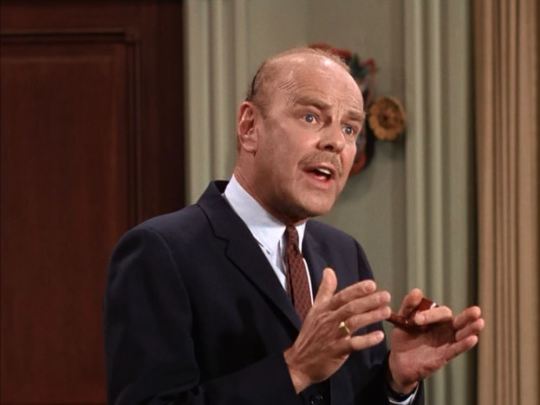
Bartlett Robinson (C.B. Wellborn) had played Mr. Wilkins in “Lucy Gets Trapped” (TLS S6;E2). This is his only appearance on “Here's Lucy.” He died in 1986.

The title refers to her as “Miss Shelley Winters” just as she was billed in the 1955 film The Big Knife when she was between husbands having divorced Vittorio Gassman in 1954 and not married Anthony Franciosa until 1957. During “Here's Lucy” she was also single, having divorced Franciosa in 1960 and not remarrying until the day before her death in 2006. The original title of the episode was “Lucy and Chubby.”

This was the first time Shelley Winters guest starred on a sitcom. She is the first guest-star on “Here’s Lucy” to have won a competitive acting Oscar at the time of her appearance (The Diary of Ann Frank in 1959). She was followed by:
Elizabeth Taylor - who earned an Oscar in 1960 and appeared on the show in 1970
Ginger Rogers - who earned an Oscar in 1940 and appeared on the show in 1971
Helen Hayes - who earned Oscars in 1931 and 1970 and appeared on the show in 1972. Hayes has the distinction of being the only multiple Oscar winner on the series as well as the only actor playing a distinctly different character than herself without her name in the title. [Winters plays Shelley Summers, and essentially is different from Winters in name only!]
William Holden holds this same distinction on “I Love Lucy” and Ed Begley Sr. on “The Lucy Show.”

As the episode opens, Lucy is listening to Harry on the dicta-phone and decides to try out the newfangled recording machine for herself, first quoting a bit of Lincoln's Gettysburg Address, then singing “The Man I Love,” a torch song by George and Ira Gershwin. The song was written for, but deleted from, the 1924 Broadway musical Lady Be Good.
Overhearing Lucy sing into the dicta-phone, Harry quips “Thank you, Tiny Tim!” Tiny Tim (born Herbert Buckingham Khaury in 1932) was a singer and ukulele player known for his cover of “Tiptoe Through the Tulips.” He was a regular cast member on “Rowan and Martin's Laugh-In” which aired opposite “Here's Lucy” on NBC.
Harry reminds Lucy that “This is a business office, not Tin Pan Alley!” Tin Pan Alley is the name given an area of New York City where music publishers and songwriters who dominated the popular music of the late 19th century and early 20th century had their businesses. The origins of the name Tin Pan Alley are unclear but one account claims that it was a derogatory reference to the sound of many pianos playing (comparing them to the banging of tin pans).

Once Lucy leaves the office to get Harry's lunch, Harry also uses the dicta-phone to record himself. He sings “Shortnin' Bread” by James Whitcomb Riley in 1900. The song was famously sung by Vivian Vance as Ethel Mertz in “Ethel's Home Town” (ILL S4;E15) in 1955.
Satisfied with the sound of his voice on the playback, he remarks “Wayne Newton eat your heart out!” Wayne Newton (born 1942) is a singer and entertainer who played a version of himself on “Lucy Discovers Wayne Newton” (TLS S4;E14). He will make two appearances as himself on “Here's Lucy.”
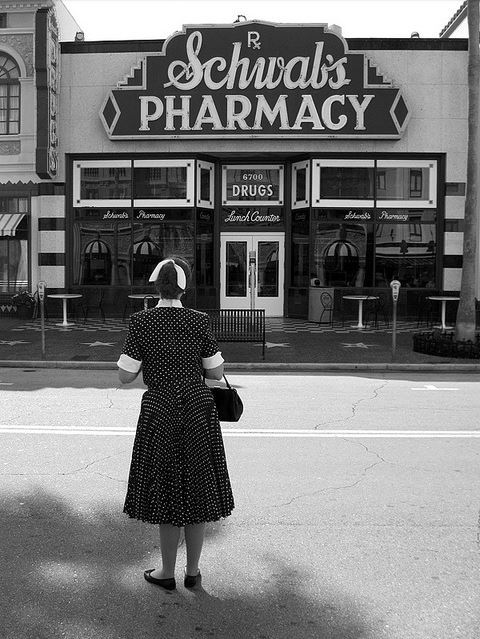
Lucy is looking forward to meeting movie producer C.B. Wellborn (no doubt named after Cecil B. DeMille), because she says hopes to break into show business, something Lucy Carter has in common with the other Lucy characters. “After all, lots of people are discovered in drug stores and elevators...” This is a reference to the legendary but apocryphal story that actress Lana Turner was discovered at Schwab's Drugstore in Hollywood. In “Lucy Gets Into Pictures” (ILL S4;E18) Lucy went down to Schwab's to be discovered but all she discovered was a stomach ache from too many ice cream sodas. Dorothy Lamour was an elevator operator in Chicago when she was discovered.
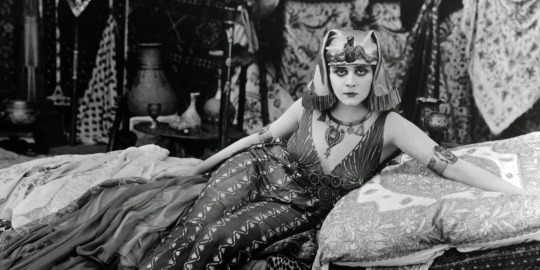
When Lucy theatrically plays up to Mr. Wellborn, Harry says to her “That will be all, Theda Bara.” Theodosia Burr Goodman (aka Theda Bara, 1885–1955) was a silent film and stage actress. She was the first to play Cleopatra on film in 1917 (now lost). Lucy played Cleopatra on the very first color filmed “The Lucy Show” in 1963, in which Lucy was also compared to Theda Bara.

On the mantle of Summers' apartment is a photo of Shelley Winters from the 1950 film Frenchie. She glances guiltily at the photo when she is about to overeat.
Summers brags about having two Oscars, just like Shelley Winters. Wild in the Street starring Shelley Winters had opened in late May 1968. In December 1968 Winters opened in the film Buona Sera, Mrs. Campbell starring Gina Lollobrigida.

Shelly Winters' dresses were padded to make her appear bigger then she really was. This is done so that in the final scene she appears thinner in her new black dress.
Shelley hides food all over her apartment:
A box of candy in the chandelier
A banana in a framed fruit basket
A bowl of spaghetti from the TV (which is actually a mini-fridge)
A whole pizza pie on the turntable of the stereo
The scene is underscored with Theremin music, which is an electronic instrument mainly used during dream sequences and in sci-fi and horror movies. It was first used to underscore Lucy Ricardo's dream of Ricky's infidelity in “Lucy and the Dummy” (ILL S5;E3). It was also used in “Lucy Gets Mooney Fired” (TLS S6;E9) when Lucy Carmichael and Mr. Mooney are 'gaslighting' Mr. Cheever into rehiring him!
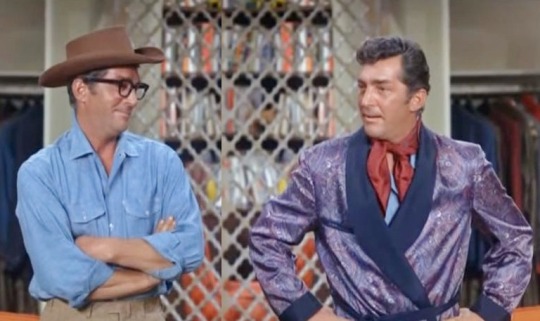
When Lucy catches her with the pizza, she claims it is a Dean Martin record and sings “When the moon hits your eye like a big pizza pie, that's amore!” “That's Amore” was written by Harry Martin and Jack Brooks and recorded by Dean Martin in 1953. “Amore” means “love” in Italian. Dean Martin guest starred on “The Lucy Show” in 1966 playing himself and his stunt double, Eddie Feldman.

Lucy discovers a rope of sausages hidden in the sofa cushion that Shelley claims are her love beads! Love beads were a necklaces worn by hippies in the 1960s as a symbol of peace and goodwill.

Shelley humorously remarks “Honey, they invented CinemaScope to get my hips in the screen!“ CinemaScope is an anamorphic lens used from 1953 to 1967 for shooting widescreen movies. Its creation in 1953 by 20th Century Fox, marked the beginning of the modern anamorphic format in both principal photography and movie projection. The anamorphic lens allowed the process to create an image almost twice as wide as the previously common format. Winters' first CinemaScope film was I Died A Thousand Times in 1955.
When Lucy bumps into Shelley and says she didn't see her, Shelley replies “Baby, on a clear day you can see me from Catalina!” The Island of Catalina off the California coast has been used as a punchline in “Lucy and Tennessee Ernie Ford” (TLS S5;E21) when the bell captain smugly says of a swanky hotel penthouse “On a clear day you can see Catalina.” This same claim was made about the Cugamonga high rise apartment in “Lucy Helps the Countess” (TLS S4;E8). In reality, it is highly unlikely (even on a rare smog-free day) to be able to see Catalina from Los Angeles, which is nearly sixty miles away.

The episode allows Winters to stretch her comic abilities. The script assigns her all the physical comedy that would normally be done by Lucy. Like Ball, Winters is game for anything and pulls it off.
Other Hollywood stars have had their surnames slightly altered for their appearances, such as Joan Blondell (Joan Brennan) and Mel Torme (Mel Tinker).
Callbacks

Preparing to make a home cooked meal for a hot date behind roommate Viv’s back, Lucy hides food all over the house in “Lucy Builds a Rumpus Room” (TLS S1;E11) just like Lucy Ricardo did when she faked a hunger strike in “Lucy Gets a Paris Gown” (ILL S5;E20).

Lucy Carmichael dieted and exercised at a fat farm in “Lucy and the Countess Lose Weight” (TLS S3;E21) in 1965. They wear pink sweat suits just like Shelley Winters!

Lucy Ricardo tried to lose weight to get into Ricky's act (and a tight costume) in “The Diet” (ILL S1;E3) in 1951. I wonder if Lucy Ricardo’s workout clothes are also pink?

“Lucy and Miss Shelley Winters” rates 4 Paper Hearts out of 5
Oddly, Shelley Winters is basically playing herself, so it is unclear why she had to be re-named Shelley Summers. Many “Lucy” guest stars have used their own names and played very different versions of themselves on screen (Wayne Newton and Joan Crawford, for example). This episode may be considered politically incorrect in today’s society, which seeks to celebrate the fuller figured woman and not measure acceptance by body size.
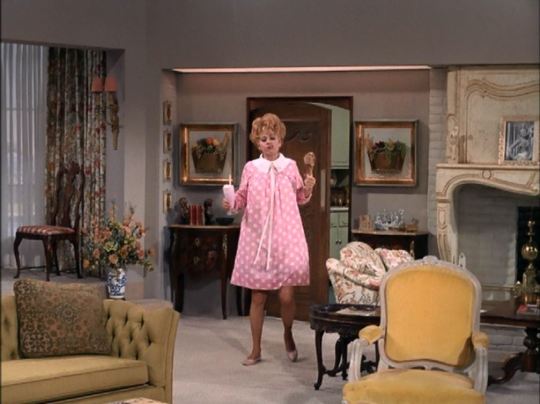
#Here's Lucy#Lucille Ball#Lucy and Miss Shelley Winters#Shelley Winters#Gale Gordon#Bartlett Robinson#Dieting#Fat#Theda Bara#Tiny Tim#CinemaScope#TV#CBS#1968#The Man I Love#Gettysburg Address#Shortnin Bread#dictaphone#Catalina#Frenchie#Love Beads#That's Amore#Dean Martin#Wayne Newton#Tin Pan Alley
9 notes
·
View notes
Text
December 13th, 2018
I realized I could've been hit on in school and I would've ever known. There was one time I found a note in my locker with something along you're a really nice person on it, but the thing is, I never used my locker that year. I had books in there that I never touched and it was a mess. Another thing is, I'm not even sure the note was meant for me. Now that sounds weird but it's true. That year, I figured out a while into the year like almost the end of the year (shows you how much I actually used that locker), that my friend had also been using my locker because hers was "too far away" also too messy. As if mine was clean. So I have no clue if that note was meant for her or me or just grabbed onto the wrong hook at the back of the wrong locker. I'm also dense when it comes to people, especially back then. So like literally anyone could have come up to me and been like I like you and I would've just been like you're cool to dude. I was very much a dude bro.... well as much as a little girl who would go play football in a dress could be. And over the years it just seems like the people I dont really get along with like me. Like why?
Anyways I dont wanna talk about that subject anymore so were gonna talk about lockers. Me and lockers have never truly liked each other over the year. Like who thought hey we give these kids so many books so why dont we make these things so that they can stuff things in them rather than lightening their loads and saving their backs. Fifth grade my locker was the worst by far. I tried so hard to keep that thing clean but oh my was it bad. At the end of the year I filled a classroom trash can full of papers from the bottom of my locker. I also found a book I was supposed to be borrowing from my English class, my books kept attacking my when I opened it. The good thing was I had a bottom locker so I didnt hit anyone that year. The next year.. I had a top locker, I'm sorry to the girl below me that year.... but I also didnt use it all the time like the year before and I had figured out a better management system and kept that. A few things happened at that locker that I'd like to forget, nothing gross, just mistakes I wish I had kept my stupid mouth shut. Anyways why the fick am I rambling about lockers... eh, the best year was tenth grade when I literally didnt use my locker at all. Well the best story year not best locker year in general. So, I always put my lunchbox in my locker and sometimes I would forget to bring it home but normally the next day I would grab it. There was one day i forgot it, and then forgot it and forgot it and forgot it and forgot it, until one day i remembered and decided to open said locker. . . Let's just say I didnt use that for the rest of the year and that hallway still smells Kappa. But this guy with a locker near me got blamed for the stench and him and his friend cleaned his locker and I mean fully cleaned with cleaning products and the smell didnt go away. (Well obviously because it was actually my locker which hadn't been touched at all in months, but no one else needed to know that) eventually on the very last day of school when there was no one in the hallway I took said lunch box and threw it away. That hallway has never been the same. The next year was cleanest I kept my locker and the best year of lockering. My one friend had photography that year and their mom didn't want their camera being stolen so they had to get one of the smaller lockers rather than one of the best lockers, that I can fit inside, and so I offered to share mine with them and that's what we did. It was the best because I only ever used it for my lunch and sports stuff. Now that I think about it I dont remember where I left my sports stuff the year before... anyways and since we shared a locker at one point I brought in these poptarts that I didnt like and left them in my locker for them and any of my friends who wanted them to eat. That was a good year.
Reminiscing
-ira
0 notes
Text
How Trump Conquered FacebookWithout Russian Ads
It’s not every day that a former work colleague gets retweeted by the president of the United States.
Last Friday, Rob Goldman, a vice president inside Facebook’s Ads team, rather ill-advisedly published a series of tweets that seemed to confirm the Trump administration’s allegations regarding the recent indictments of 13 Russian nationals by Special Counsel Robert Mueller. To wit, the tweets said that the online advertising campaign led by the shadowy Internet Research Agency was meant to divide the American people, not influence the 2016 election.
Antonio García Martínez (@antoniogm) is an Ideas contributor for WIRED. Before turning to writing, he dropped out of a doctoral program in physics to work on Goldman Sachs’ credit trading desk, then joined the Silicon Valley startup world, where he founded his own startup (acquired by Twitter in 2011) and finally joined Facebook’s early monetization team, where he headed the company's targeting efforts. His 2016 memoir, Chaos Monkeys, was a New York Times best seller and NPR Best Book of the Year, and his writing has appeared in Vanity Fair, The Guardian, and The Washington Post. He splits his time between a sailboat on the San Francisco Bay and a yurt in Washington’s San Juan Islands.
You’re probably skeptical of Rob’s claim, and I don’t blame you. The world looks very different to people outside the belly of Facebook’s monetization beast. But when you’re on the inside, like Rob is and like I was, and you have access to the revenue dashboards detailing every ring of the cash register, your worldview tends to follow what advertising data can and cannot tell you.
From this worldview, it's still not clear how much influence the IRA had with its Facebook ads (which, as others have pointed out, is just one small part of the huge propaganda campaign that Mueller is currently investigating). But no matter how you look at them, Russia’s Facebook ads were almost certainly less consequential than the Trump campaign’s mastery of two critical parts of the Facebook advertising infrastructure: The ads auction, and a benign-sounding but actually Orwellian product called Custom Audiences (and its diabolical little brother, Lookalike Audiences). Both of which sound incredibly dull, until you realize that the fate of our 242-year-old experiment in democracy once depended on them, and surely will again.
Like many things at Facebook, the ads auction is a version of something Google built first. As on Google, Facebook has a piece of ad real estate that it’s auctioning off, and potential advertisers submit a piece of ad creative, a targeting spec for their ideal user, and a bid for what they’re willing to pay to obtain a desired response (such as a click, a like, or a comment). Rather than simply reward that ad position to the highest bidder, though, Facebook uses a complex model that considers both the dollar value of each bid as well as how good a piece of clickbait (or view-bait, or comment-bait) the corresponding ad is. If Facebook’s model thinks your ad is 10 times more likely to engage a user than another company’s ad, then your effective bid at auction is considered 10 times higher than a company willing to pay the same dollar amount.
A canny marketer with really engaging (or outraging) content can goose their effective purchasing power at the ads auction, piggybacking on Facebook’s estimation of their clickbaitiness to win many more auctions (for the same or less money) than an unengaging competitor. That’s why, if you’ve noticed a News Feed ad that’s pulling out all the stops (via provocative stock photography or other gimcrackery) to get you to click on it, it’s partly because the advertiser is aiming to pump up their engagement levels and increase their exposure, all without paying any more money.
During the run-up to the election, the Trump and Clinton campaigns bid ruthlessly for the same online real estate in front of the same swing-state voters. But because Trump used provocative content to stoke social media buzz, and he was better able to drive likes, comments, and shares than Clinton, his bids received a boost from Facebook’s click model, effectively winning him more media for less money. In essence, Clinton was paying Manhattan prices for the square footage on your smartphone’s screen, while Trump was paying Detroit prices. Facebook users in swing states who felt Trump had taken over their news feeds may not have been hallucinating.
(Speaking of Manhattan vs. Detroit prices, there are some (very nonmetaphorical) differences in media costs across the country that also impacted Trump’s ability to reach voters. Broadly, advertising costs in rural, out-of-the-way areas are considerably less than in hotly contested, dense urban areas. As each campaign tried to mobilize its base, largely rural Trump voters were probably cheaper to reach than Clinton’s urban voters. Consider Germantown, Pa. (a Philly suburb Clinton won by a landslide) vs. Belmont County, Ohio (a rural county Trump comfortably won). Actual media costs are closely guarded secrets, but Facebook’s own advertiser tools can give us some ballpark estimates. For zip code 43950 (covering the county seat of St. Clairsville, Ohio), Facebook estimates an advertiser can show an ad to about 83 people per dollar. For zip code 19144 in the Philly suburbs, that number sinks to 50 people an ad for every dollar of ad spend. Averaged over lots of time and space, the impacts on media budgets can be sizable. Anyway …)
The Like button is our new ballot box, and democracy has been transformed into an algorithmic popularity contest.
The above auction analysis is even more true for News Feed, which is only based on engagement, with every user mired in a self-reinforcing loop of engagement, followed by optimized content, followed by more revealing engagement, then more content, ad infinitum. The candidate who can trigger that feedback loop ultimately wins. The Like button is our new ballot box, and democracy has been transformed into an algorithmic popularity contest.
But how to trigger the loop? For that, we need the machinery of targeting. (Full disclosure: I was the original product manager for Custom Audiences, and along with a team of other product managers and engineers, I launched the first versions of Facebook precision targeting in the summer of 2012, in those heady and desperate days of the IPO and sudden investor expectation.)
Despite folklore about “selling your data,” most Facebook advertisers couldn’t care less about your Likes, your drunk college photos, or your gossipy chats with a boyfriend. What advertisers want to do is find the person who left a product unpurchased in an online shopping cart, just used a loyalty card to buy diapers at Safeway, or registered as a Republican voter in Stark County, Ohio (a swing county in a swing state).
Custom Audiences lets them do that. It’s the tunnel beneath the data wall that allows the outside world into Facebook’s well-protected garden, and it’s like that by design.
Browsed for shoes and then saw them on Facebook? You’re in a Custom Audience.
Registered for an email newsletter or used your email as login somewhere? You’re in a Custom Audience.
Ordered something to a postal address known to merchants and marketers? You’re definitely in a Custom Audience.
Here’s how it works in practice:
A campaign manager takes a list of emails or other personal data for people they think will be susceptible to a certain type of messaging (e.g. people in Florida who donated money to Trump For America). They upload that spreadsheet to Facebook via the Ads Manager tool, and Facebook scours its user data, looks for users who match the uploaded spreadsheet, and turns the matches into an “Audience,” which is really just a set of Facebook users.
Facebook can also populate an audience by reading a user’s cookies—those digital fragments gathered through a user’s wanderings around the web. Half the bizarre conspiracy theories around Facebook targeting boil down to you leaving a data trail somewhere inside our consumer economy that was then uploaded via Custom Audiences. In the language of database people, there’s now a “join” between the Facebook user ID (that’s you) and this outside third-party who knows what you bought, browsed, or who you voted for (probably). That join is permanent, irrevocable, and will follow you to every screen where you’ve used Facebook.
The above is pretty rudimentary data plumbing. But only when you’ve built a Custom Audience can you build Lookalike Audiences— the most unknown, poorly understood, and yet powerful weapon in the Facebook ads arsenal.
With a mere mouse click from our hypothetical campaign manager, Facebook now searches the friends of everyone in the Custom Audience, trying to find everyone who (wait for it) “looks like” you. Using a witches’ brew of mutual engagement—probably including some mix of shared page Likes, interacting with similar News Feed or Ads content, a score used to measure your social proximity to friends—the Custom Audience is expanded to a bigger set of like-minded people. Lookalikes.
(Another way to picture it: Your social network resembles a nutrient-rich petri dish, just sitting out in the open. Custom Audiences helps mercenary marketers find that dish, and lets them plant the bacterium of a Facebook post inside it. From there, your own interaction with the meme, which is echoed in News Feed, spreads it to your immediate vicinity. Lookalike Audiences finishes the job by pushing it to the edges of your social petri dish, to everyone whose tastes and behaviors resemble yours. The net result is a network overrun by an infectious meme, dutifully placed there by an advertiser, and spread by the ads and News Feed machinery.)
We’ve all contributed to this political balkanization by self-sorting (or being sorted by Facebook) into online tribes that get morphed into filter bubbles, which are then studiously colonized by commercial memes planted and spread there by a combination of Custom and Lookalike Audiences. One of the ways the Trump campaign leveraged Lookalike Audiences was through its voter suppression campaigns among likely Clinton voters. They seeded the Audiences assembly line with content about Clinton that was engaging but dispiriting. This is one of the ways that Trump won the election, by the very tools that were originally built to help companies like Bed Bath & Beyond sell you towels.
Unsurprisingly, the Russians also apparently made use of Custom Audiences in their ads campaign. The unwary clicker on a Russian ad who then visited their propaganda site suddenly could find yet more planted content in their Feed, which could generate downstream engagement in Feed, and thus the great Facebook wheel turned. The scale of their spend was puny, however, a measly $100,000, which pales in comparison to the millions Trump spent on online advertising.
The above isn’t mere informed speculation, the Trump campaign admitted to its wide use of both Custom and Lookalike audiences. There seems to be little public coverage of whether the Clinton campaign used Facebook Ads extensively, but there’s no reason to think her campaign did not exploit the same tools.
“I always wonder why people in politics act like this stuff is so mystical,” Brad Parscale, the leader of the Trump data effort, told reporters in late 2016. “It’s the same shit we use in commercial, just has fancier names.”
He’s absolutely right. None of this is even novel: It’s merely best practice for any smart Facebook advertiser. Custom Audiences was launched almost six (!) years ago, marketed publicly at the time, and only now is becoming a mainstream talking point. The ads auction has been studied by marketers and academics for even longer. The only surprise is how surprising it can still seem to many.
If we’re going to reorient our society around Internet echo chambers, with Facebook and Twitter serving as our new Athenian agora, then we as citizens should understand how that forum gets paid for. Rarely will the owners of that now-privatized space deign to explain how they’re keeping the lights on. Plotting Russians make for a good story, and external enemies frequently serve an internal purpose, but the trail of blame often leads much closer to home. It’s right there, topped by a big, blue bar on our smartphone screens, and could very well be how you arrived at what you’re reading right now.
Update (February 27, 2018): In an unusual move, Andrew 'Boz' Bosworth, former VP of Facebook Ads, posted average CPMs for both the Clinton and Trump campaigns this afternoon. The figures are national averages over time, and while they fluctuate wildly, they mostly show the Trump campaign paying more on a CPM basis than Clinton. While interesting, and the transparency of Facebook is admirable, the data only refute the rather strong statement that Trump always and everywhere paid less. By and large, these data do not confirm or deny the hypotheses contained in this piece.
The data that Facebook needs to show us are average CPMs broken down by targeting type, action type (e.g., clicks or likes), and geography. The first two would help distinguish direct-response campaigns, which typically are precision targeted and high CPM, from more brand-style ad campaigns that are broadly targeted and low CPM. Combining the data from both styles of campaign—which broadly define the two types that advertisers undertake—can be very deceptive, and the two campaign types need to be judged separately.
Furthermore, a breakdown by geography would help determine whether another assertion made in this piece is correct: That Trump paid less to mobilize his base than Hillary. Obviously, combining data nationwide makes this very hard to figure out.
Reportedly, Facebook has asked the campaigns to be more forthcoming with data. As it's in both those campaigns' interests at this point, one can only hope they do so. As we used to say at Facebook: "Data wins arguments."
Facebook's Advertising Machine
Rob Goldman, VP of ads at Facebook, published a tweetstorm on Friday appearing to confirm the Trump administration’s allegations around the ongoing Muller investigation … and he did so without clearing his contributions with his employer.
No, Facebook isn't eavesdropping on you through your phone to better target you with ads. It doesn't have to.
To fix its toxic ad problem, Facebook will have to undergo a massive cultural shift.
Photograph by WIRED/Getty Images
Related Video
Security
How to Lock Down Your Facebook Security and Privacy Settings
The only way to be truly secure on Facebook is to delete your account. But that's crazy talk! Here's how to lock down your privacy and security and bonus, keep targeted ads at bay.
Read more: https://www.wired.com/story/how-trump-conquered-facebookwithout-russian-ads/
from Viral News HQ http://ift.tt/2IEor1p
via Viral News HQ
0 notes
Photo
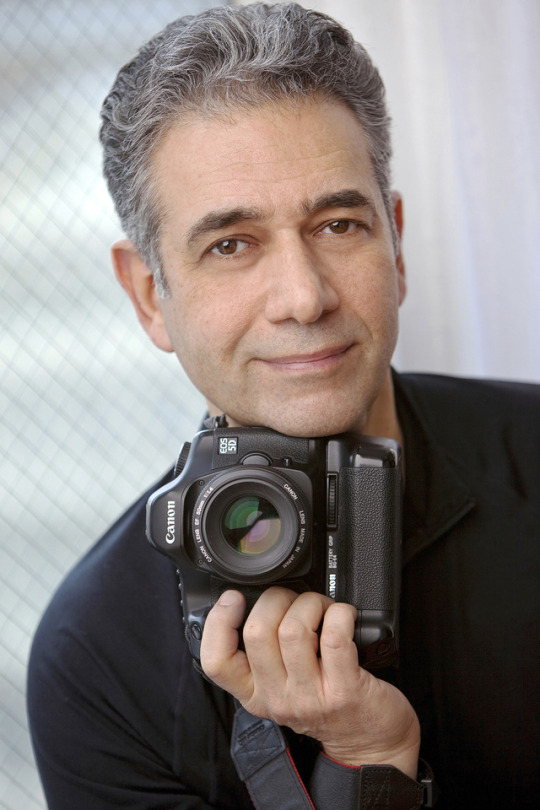
Ira Fox Research
Who is he?
Ira Fox is a professional Photographer who specialises in event-based photography such as weddings, parties and other special occasions. He is known for capturing photos with a special cinematic appeal that really makes his work stand out above the rest. His work has been known to appear in big-name new papers and magazines such as ‘The New York Times’ and ‘The Huffington Post’.
What about his work Inspired me?
Ira Fox has a well-known series of photo’s based on reflection photography, simply titled ‘Reflections’ which is similar to my project based on the Idea of using reflections and documenting their nature. He captured all the photo’s in the city of New York where he is based.

One of the photos in this series is a remarkable Image in which he captures a person riding a bike through the street. Purely focusing on the nature of the reflection, Ira has managed to capture an Image that ultimately leaves a lot to the Imagination. The way in which the Image was captured makes us feel as though the people within it have been captured through some kind of magical portal that seems so surreal.
One particular thing I really enjoyed about the Image is the way that we can’t really make out the Identity of anyone within the Image and therefore I feel like we focus more purely on the colour of the Image. The soft, yellow glow of the Image gives us a sense of warmth and peace.
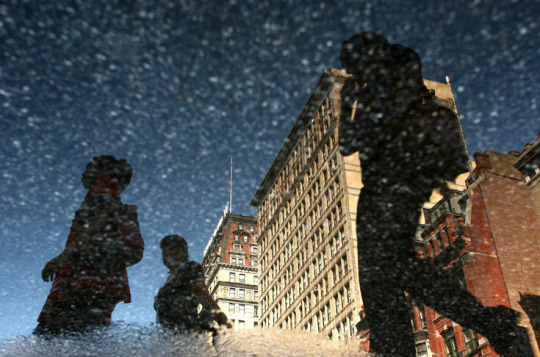
Another one of his Images I was really fascinated by in the ‘Reflection’ series was this one here, which similar to the previous one shows a group of pedestrians but their Identity can’t really be seen. I feel as if this Image particularly has purposely tried to silhouette the people within the Image. I feel that as the viewer, this leaves us asking questions about who these people are and what they are doing.
What I love about this Image is how Ira Fox has captured it in such a way that makes the specks in the pavement appear almost as if Stars in the sky that contrasts so heavily with the blue of the sky and the black silhouettes.
How is his work similar to what I’ve captured?
When comparing my work to Ira Fox’s I see some distinct similarities in terms of what I have tried to convey.

For example is this piece I have tried to use silhouettes in a similar way to Ira Fox, where I want the audience asking the question of “What is happening in this Image?” or “What is it that I am particularly looking at?”. It add’s a sense of mystery to the Image which is partially what I want to convey.
I also find that what I have tried to document in this picture is similar to how Ira has documented reflection in his pieces, where the main focus is purely on the reflection aspect and distinction between what’s real and what’s reflection based is quite limited.
How can I continue to use his work to Improve my own?
Something I still want to develop on using Ira’s work as Inspiration is the use of documenting both people and reflections together, something which I believe Ira has done very well. I want to be able to document the nature of showing the lives of ordinary people through the unseen world of reflections in numerous way and puddle based reflections is one of those ways that I would like to try and Improve upon.
References:
http://www.irafox.com/meetira/
https://fstoppers.com/portraits/photos-these-puddle-portraits-photographer-ira-fox-are-unbelievable-6119
0 notes
Text


5 notes
·
View notes
Text
Two-way mirror styling
Part2: Styling for Jiwom
On 9 October, Ira and I went to Jiwon’s place to style for her. It was my second try to style for others. Jiwom’s wardrobe is clean and basiclly full of white, grey and black items. She also has got some nice scarfs and earings.
This is a picture of some of her clothes:

For first styling, I’d like to create a image of a urban-chic woman, chill and boyish, which is different from her original femine style.
I choose a white T-shirt with thick fabric, a loose black short and a pair of black sock sneakers.
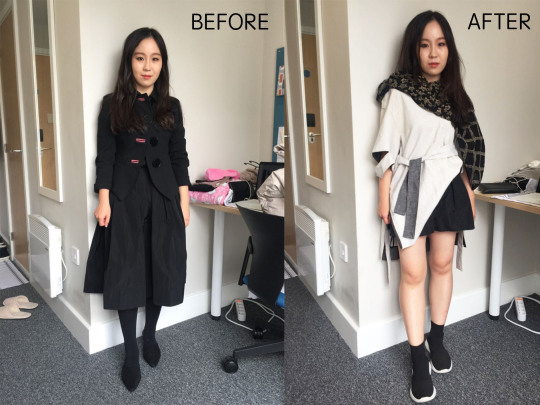
The T-shirt itself is a quite unique one because it has some deconstruted elements like torn and hanging-down ribbons on both sides. I use two as the belt and let others hand down. I put one side of the edge of the top into the short, to create asymmetry. And a long silk dress plays a role of scarf, which is casually and asymmetrically arranged as well.
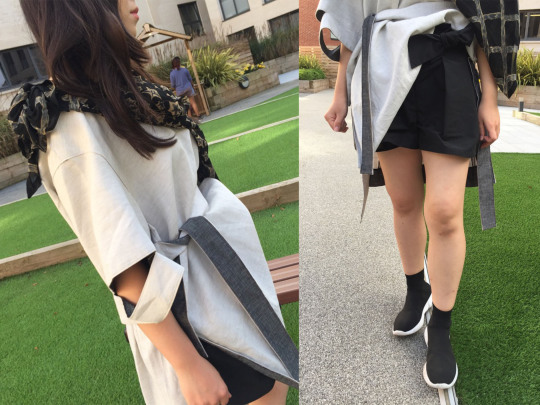

This time, I took a photo ouside of room, on a big lawn. I tried to show and instruct Jiwom to make some “chill” posture, like sitting on the bench and look at the camera, not smiling. I palnned to create a image of woman who is very cool, brave and free.



For the second outfit, I tried to create a image of a hippie. I seleted a suede black jacket, a white blouse with special layered collar, a printed silk dress (which was used as a scraf in the former outfit), a kerchieff, a net bag and a pair of black Chelsea boots.
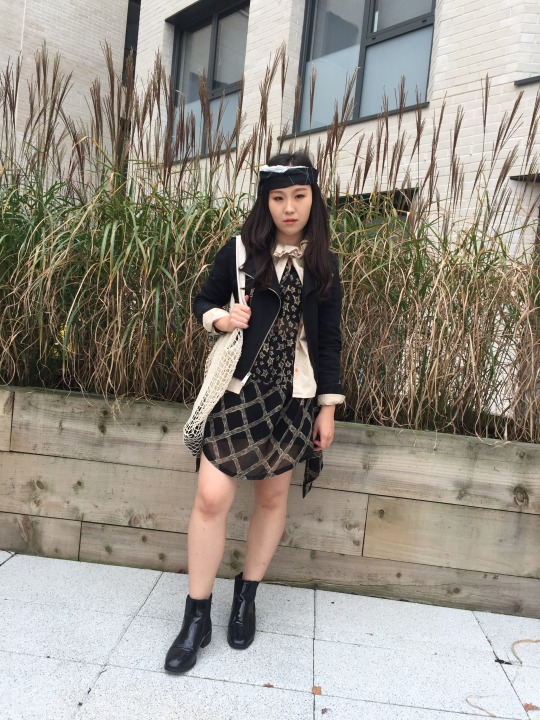
The kerchief was used as a hair band, to create an hippie and bohemian style. Maybe I should’ve do something more to the hairstyle, for example, the tress. And the makeup can be also improved to match the style of hippie.
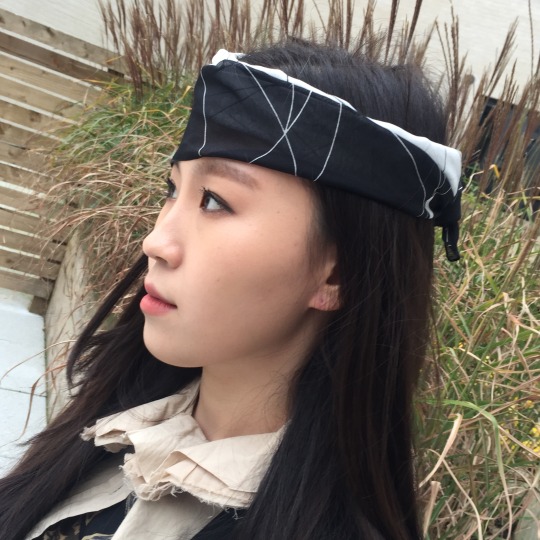
( the layered and raw-edges collar of the white clouse)
I also tried to instruct Jiwom to do some poses and express herself, but to be honest it was a little awkward lolll... And i think I’m not good at photography neither, so the final outcome was not very satisfying. I realize that styling is completely a teamwork!!! including all the professional people, like the photographer, makeup artist, hairstyle artist, expect from the stylist. The final achievement counts on all these people, I think.

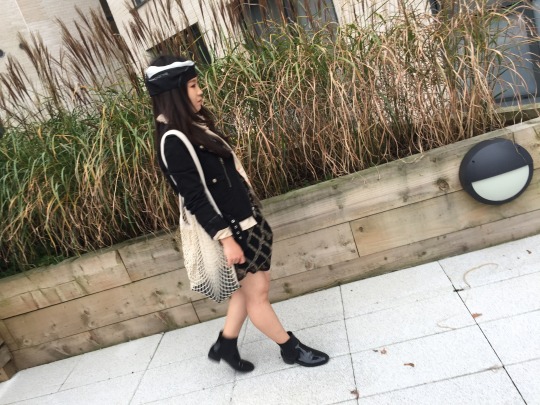

However, I think I’ve made a little progress than the first time because I have come up with a theme before I do the styling work: what kind of women image I’d like to make and what kind of pose I want the model to make, etc. But I think for a professional stylist, it’s not enough. I have to do some research before the work so as to make the image deeper, to reflet something or tell a story.
In conclusion, it was really fun and I have realized how styling can change a person. What’s more, I learned that a stylist plays a very important role. This is the person who need to organize and dominate the whole team, and decide what need to be conveyed through the image. I hope I can learn more about styling through the class and practices after class!
0 notes
Text
Rippling red brick facade shades house in Surat by Design Work Group
Design Work Group has completed a family home in the Indian port city of Surat, which features a gently undulating brick facade that offers shade from the sun.
The building's location at the intersection of two roads informed the architects' decision to divide it into two contrasting zones – one encased in concrete and the other in brick.
"The site is a part of residential area on a corner plot approached from road on the west edge," explained the studio, which is based locally. "The layout was organised so that the private zone was at the inner side, and public zone at the front."
The more private side of the house is located at the south-west of the the site, away from the road, and comprises a kitchen, dining room and bedrooms, as well as an area for the client's staff.
By contrast, a large lounge with a terrace at either end is positioned overlooking the road, where it is joined by a carport. Opaque red brick screens extend out to afford a degree of privacy on the terraces, which are fronted with glass balustrades. But perforations in the brickwork at eye level allow the residents to peer out over the street.
The double-height living room forms the main space of Brick Curtain House, but due to its position, it was exposed to direct sunlight throughout the day and at risk of overheating.
"The spatial organisation brought with it the biggest climatic challenge – the front facade with large surface areas are exposed to the west side, intensifying the heat gain throughout the day," explained the architects.
To ensure this space was usable throughout the day, Design Work Group tried and tested a number of potential interventions that would ensure the building remained cool. The final outcome was the protruding brick facade.
Undulations in the facade enables the wall to shade itself, while the overhangs prevent direct sunlight into the space, working concurrently to reduce heat gain.
While serving a primarily functional purpose, the brick facade also embellishes the otherwise plain concrete walls of the house.
To complement the exposed brickwork, the public spaces are complete with autumnal-toned furniture. Natural-coloured finishes feature throughout the rest of the house also, with wooden cabinets and tables teamed with marble flooring and areas of exposed concrete.
Other homes with decorative brick facades include the Ruffey Lake House by Inbetween Architecture, which features perforated brickwork as means to break up the mass of the structure.
Photography is by phxindia (Sebastian Zachariah and Ira Gosalia).
Project credits:
Design team: Dinesh Suthar, Bharat Patel, Jitendra Sabalpara, Sonakshi Berlia, Bhavika Suthar, Vishakha Jain, Ankit Sojitra, Chirag Katrodiya
Structure: Angle Consultancy
Contractor: Himmat Patel
Carpenter: Sureshbhai Suthar
Electrician: Leo Electrical
Stone work: Praveen Tank
Paint work: Guddubhai
Windows: Dream Home Element
Exterior stone-chip plaster: Kesari Singh
Client: Kanjibhai Bhalala
The post Rippling red brick facade shades house in Surat by Design Work Group appeared first on Dezeen.
from RSSMix.com Mix ID 8217598 https://www.dezeen.com/2017/06/27/undulating-brick-facade-shades-house-architecture-surat-india/
0 notes
Text
Principal photography has wrapped on Wild Fire Nights, a short contemporary drama written and directed by Emma Eliza Regan. Alone in a hospital ward, a free-spirited party girl tries to come to terms with her unwanted pregnancy.
The short has a stellar Irish cast attached including Gerard McSorley (In The Name Of The Father, Veronica Guerin), IFTA award winning actor Dara Devaney (An Klondike, Camelot), David Murray (Amber, The Guarantee) and James Browne – who was recently seen in Lorcan Finnegan’s Catalyst feature film Without Name, as well as starring in Maze, Stephen Burke’s upcoming film inspired by the true events of the infamous 1983 prison breakout of 38 IRA prisoners.
Adding writing/directing to her bow, prolific actress Regan recently wrapped the lead role in thriller Ouija: The Insidious Evil for Shoreline Entertainment, alongside Dominique Swaine (Alpha Dog, Lolita). In 2015, she received rave reviews for her portrayal as a teenage sharpshooter in Darkness On The Edge Of Town opposite Brian Gleeson, which earned the film an American release. Previous roles include Love Eternal, Get Up and Go, Fading Away, The Fading Light, and Death Of A Superhero.
This slideshow requires JavaScript.
Wild Fire Nights filmed in locations around Galway City, Dublin and Aran Islands, and Regan hopes to premiere on home soil in Galway this July, followed by an international festival tour.
D.O.P was Brian Durcan (Sanctuary, Soulsmith), with camera assistant Rossa O’ Dowd (Solaria). Production design was by IFTA nominated Steve Kingston (Detainment, The Trouble with Sex), who also has an extensive portfolio of music video work with Sony and Universal for bands such as U2, Riptide Movement, Bressie and more. His commercial work includes clients such as Adidas, Playstation, Allianz Insurance, Guinness and AIB. Galway native Stephen Molloy (Ros Na Run) was on sound.
The film is currently in the post-production phase, being edited by Ronnie Quinlan (Jack Taylor: In Purgatory, Drop Dead Weird). BAFTA and Golden Globe nominated Ilan Eskheri (Still Alice, Young Victoria) is the composer, creating an original soundtrack with Liam O’ Maolai.
For more on the film check it its Facebook page or IMDb.
#IrishFilm: Principal photography wraps on Emma Eliza Regan's short drama Wild Fire Nights Principal photography has wrapped on Wild Fire Nights, a short contemporary drama written and directed by Emma Eliza Regan.
#Dara Devaney#David Murray#Emma Eliza Regan#Gerard McSorley#Irish Short Film#James Browne#Marian Ridge#Wild Fire Nights
0 notes
Photo
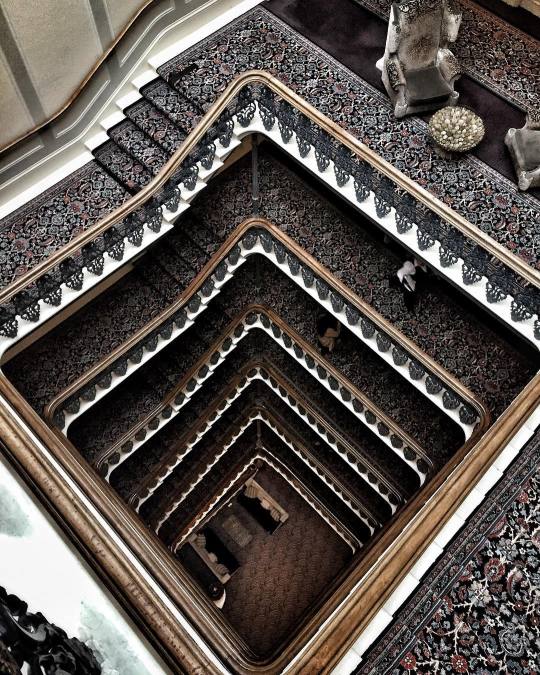
Decided to get out of London for a few days, having a bit of luxury at the Grand Brighton Hotel, a few floors above where the IRA tried to blow up Thatcher. #iphone6 #iphoneonly #iphonography #mobile #photography #mpnselects #FotoMobile #outofthephone #brighton #grand #hotel http://ift.tt/2iPbnJP
0 notes











